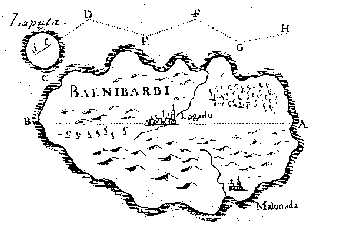https://en.wikipedia.org/wiki/Dogon_people wrote:
<<Starting with the French anthropologist Marcel Griaule, several authors have claimed that Dogon traditional religion incorporates details about extrasolar astronomical bodies that could not have been discerned from naked-eye observation. The idea has entered the New Age and ancient astronaut literature as evidence that extraterrestrial aliens visited Mali in the distant past. Other authors have argued that previous 20th-century European visitors to the Dogon are a far more plausible source of such information and dispute whether Griaule's account accurately describes Dogon myths at all.
From 1931 to 1956, Griaule studied the Dogon in field missions ranging from several days to two months in 1931, 1935, 1937 and 1938 and then annually from 1946 until 1956. In late 1946, Griaule spent a consecutive 33 days in conversations with the Dogon wiseman Ogotemmêli, the source of much of Griaule and Dieterlen's future publications. They reported that the Dogon believe that the brightest star in the night sky, Sirius (sigi tolo or "star of the Sigui"), has two companion stars, pō tolo (the Digitaria star), and ęmmę ya tolo, (the female Sorghum star), respectively the first and second companions of Sirius A. Sirius, in the Dogon system, formed one of the foci for the orbit of a tiny star, the companionate Digitaria star. When Digitaria is closest to Sirius, that star brightens: when it is farthest from Sirius, it gives off a twinkling effect that suggests to the observer several stars. The orbit cycle takes 50 years. They also claimed that the Dogon appeared to know of the rings of Saturn, and the moons of Jupiter.
Griaule and Dieterlen were puzzled by this Sudanese star system, and prefaced their analysis with the disclaimer, "The problem of knowing how, with no instruments at their disposal, men could know the movements and certain characteristics of virtually invisible stars has not been settled, nor even posed."
More recently, doubts have been raised about the validity of Griaule and Dieterlen's work. In a 1991 article in Current Anthropology, anthropologist Wouter van Beek concluded after his research among the Dogon that, "Though they do speak about sigu tolo [which is what Griaule claimed the Dogon called Sirius] they disagree completely with each other as to which star is meant; for some it is an invisible star that should rise to announce the sigu [festival], for another it is Venus that, through a different position, appears as sigu tolo. All agree, however, that they learned about the star from Griaule."
Griaule's daughter Geneviève Calame-Griaule responded in a later issue, arguing that Van Beek did not go "through the appropriate steps for acquiring knowledge" and suggesting that van Beek's Dogon informants may have thought that he had been "sent by the political and administrative authorities to test the Dogon's Muslim orthodoxy".
In a 1978 critique, skeptic Ian Ridpath concluded: "There are any number of channels by which the Dogon could have received Western knowledge long before they were visited by Griaule and Dieterlen." In his book Sirius Matters, Noah Brosch postulates that the Dogon may have had contact with astronomers based in Dogon territory during a five-week expedition, led by Henri-Alexandre Deslandres, to study the solar eclipse of 16 April 1893.
Robert Todd Carroll also states that a more likely source of the knowledge of the Sirius star system is from contemporary, terrestrial sources who provided information to interested members of the tribes. James Oberg, however, citing these suspicions notes their completely speculative nature, writing that, "The obviously advanced astronomical knowledge must have come from somewhere, but is it an ancient bequest or a modern graft? Although Temple fails to prove its antiquity, the evidence for the recent acquisition of the information is still entirely circumstantial." Additionally, James Clifford notes that Griaule sought informants best qualified to speak of traditional lore, and deeply mistrusted converts to Christianity, Islam, or people with too much contact with whites.
Oberg points out a number of errors contained in the Dogon beliefs, including the number of moons possessed by Jupiter, that Saturn was the furthest planet from the sun, and the only planet with rings. Intrigue of other seemingly falsifiable claims, namely concerning a red dwarf star orbiting around Sirius (not hypothesized until the 1950s) led him to entertain a previous challenge by Temple, asserting that "Temple offered another line of reasoning. 'We have in the Dogon information a predictive mechanism which it is our duty to test, regardless of our preconceptions.' One example: 'If a Sirius-C is ever discovered and found to be a red dwarf, I will conclude that the Dogon information has been fully validated.'
This alludes to reports that the Dogon knew of another star in the Sirius system, Ęmmę Ya, or a star "larger than Sirius B but lighter and dim in magnitude". In 1995, gravitational studies indeed showed the possible presence of a brown dwarf star orbiting around Sirius (a Sirius-C) with a six-year orbital period. A more recent study using advanced infrared imaging concluded that the probability of the existence of a triple star system for Sirius is "now low" but could not be ruled out because the region within 5 AU of Sirius A had not been covered.>>



